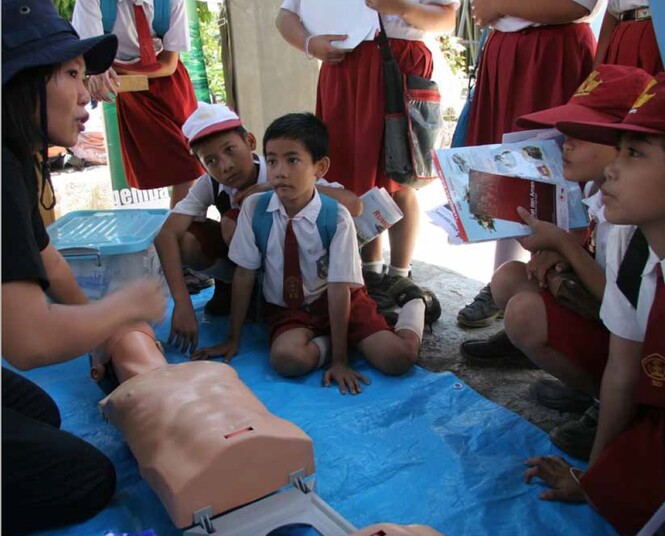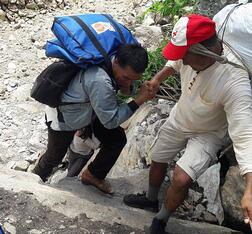
Widespread training and education in first aid can improve the chances that someone is close at hand who is able and willing to provide the necessary intervention in the first moments after an injury or other sudden health crisis, avoiding “death by delay” pending the arrival of more highly trained health professionals. Nevertheless, lawmakers have traditionally paid relatively little attention to first aid provided by laypeople. From country to country, there is enormous variety as to whether and how first aid training and delivery is promoted and regulated by law, with important gaps in many countries.
In this recently released report, the IFRC highlights three areas in which stronger legislation related to first aid may contribute to saving more lives.
Mandating first aid training in certain circumstances:
Schools: Many countries do not require teachers or school personnel to have first aid training even though parents expect schools to do their best to ensure the safety of their children. Studies have also shown that children themselves, even at quite a young age, are capable of learning and applying aspects of first aid. Moreover, they are well placed to learn and to receive training and in particular refresher sessions to cement their knowledge. Yet, only a minority of the countries examined required first aid training for students.
Driver’s license applicants: Countries that have instituted mandatory first aid training requirements for applicants have seen dramatically higher permeation of first aid knowledge in their populations compared to those that have not. Moreover, road traffic accidents make up the largest proportion of unintentional injury deaths in the world and other drivers are often those closest at hand when they occur. Countries in Europe have gone farthest in this respect, though even there about a fourth of countries have no mandatory requirements.
Occupational safety and health rules: This is the most common type of first aid training requirement around the world. Evidence has shown that workplace first aid training not only saves lives in situations of crisis but also enhances participants’ motivation to avoid occupational injuries and illnesses in the first place and improves their risk control behaviour. Even here, however, the picture is mixed. Some countries do not impose first aid training as part of their occupational and health approach, and some that do have such rules lack the institutional infrastructure for enforcement.
Standards for first aid training: Studies confirm that correctly performed first aid is much more likely to save lives than clumsier attempts. Yet, very few states examined for this report had any official guidelines or standards for the minimum quality of content of first aid courses.
Protection from liability: Studies in the literature and the surveys of Red Cross and Red Crescent first aid experts have shown that bystanders are frequently very reluctant to provide assistance in situations of crisis, and one of the reasons is a fear of legal entanglement. While some countries provide explicit protections against liability for those who try to help in such situations, this is not the case everywhere else. Moreover, even in some countries where protections do exist, they are not well known (or believed) in the population.



